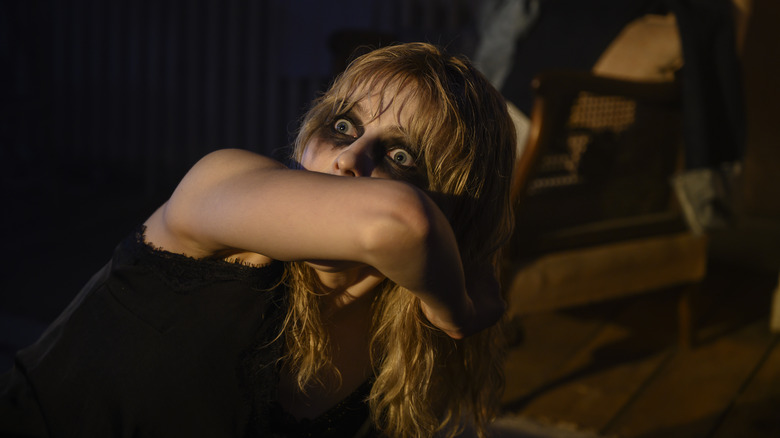
With the release of "Last Night in Soho", director Edgar Wright takes the leap into full-blown psychological horror. Previously, his films have walked the line between comedy and other genres (zombies, video games, horror), but nothing to date could have prepared audiences for what he's unleashed with this film.
"Last Night in Soho" takes the mood of a psychological thriller and wraps it around the supernatural, giving us something that feels strange and new. Combined with Wright's uncanny knack for filmed transitions and careful use of music, he feels like he could very easily take the mantle of a modern-day Alfred Hitchcock.
"Last Night in Soho" tells a story about Eloise (Thomasin McKenzie), an aspiring fashion designer who can see the dead. When she heads to London, there are worries that she'll be too overwhelmed, but she flourishes after her dreams whisk her back to the '60s at the height of the fashion and music she loves so much. There's a sinister side to all of it, however, and as Eloise blends the two worlds together, she has trouble telling fact from fiction. Is she going crazy? Or are there really ghosts trying to tell her something?
We took a look at seven films you'll want to watch if you liked "Last Night in Soho," all classics in their own right.
Vertigo (1958)
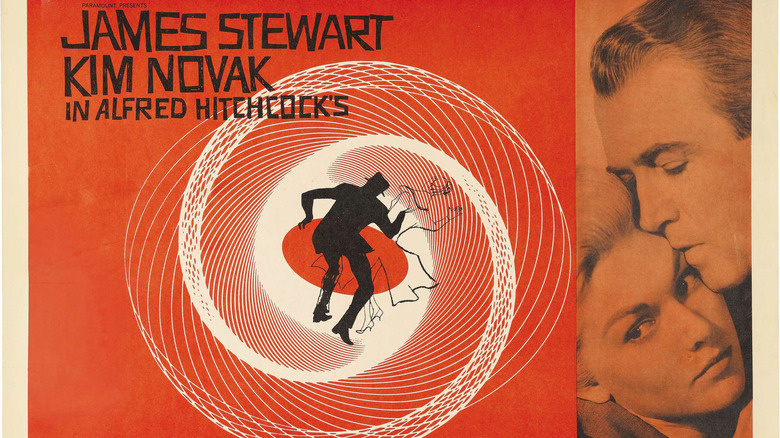
Alfred Hitchcock is the master of the tense buildup and Edgar Wright takes moves straight from Alfred Hitchcock's psychological masterpiece, "Vertigo." The 1958 thriller tells the story of an ex-police detective afflicted with vertigo, Scottie Ferguson (Jimmy Stewart), who witnesses a crime. But did he actually witness the crime he thinks he did? As the film plays out, Ferguson realizes that things weren't what they seemed from the beginning and the crime he thought he saw was something else entirely.
"Last Night in Soho" also plays on themes from "Vertigo" in the way characters are interested in seeing themselves in other people. In "Vertigo," Kim Novak's character is slowly transformed into someone else and begins to don her appearance (albeit at the insistence of Ferguson.) In "Last Night in Soho," Eloise transforms herself into an ideal version of herself, trying so hard to look like Sandie (Anna Taylor-Joy), the woman in her '60s dreams.
Hitchcock's construction of the story, carefully laying the context of the crime and situation, may well have been on Edgar Wright's mind as he constructed the twists and turns of "Last Night in Soho." The thematic crossover between the two films is remarkable and worth your time to investigate.
The Devil's Backbone (2001)
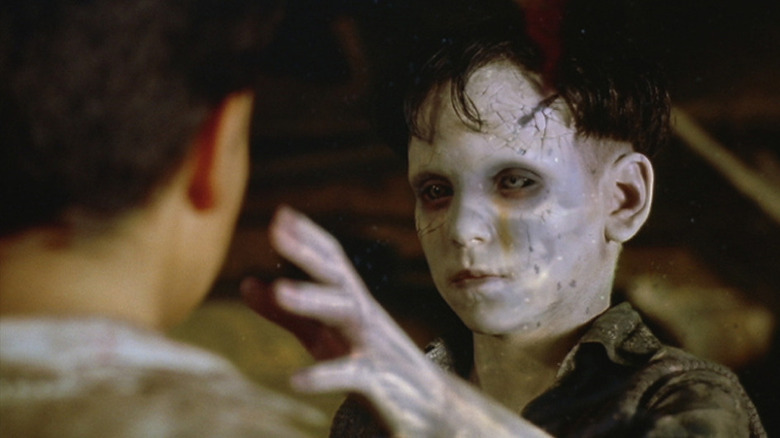
There is nothing more frightening than a well-constructed ghost story from Guillermo Del Toro. "El espinazo del diablo" (or "The Devil's Backbone") is Del Toro's first masterpiece of the genre. Set during the Spanish Civil War, the film follows Carlos, a young boy whose father died in the conflict. He's sent to live in a distant orphanage for boys, away from the fighting. Ghosts plague him as well as the living and he slowly realizes that the ghosts aren't trying to hurt him, but rather trying to save him and get their vengeance against the one who killed them.
In Del Toro movies the ghosts are often terrifying through the first act of the film, but eventually the hero realizes they're benevolent and trying to save and protect them. It's an inversion of this that Edgar Wright leans on for the stunning climax of "Last Night in Soho," and creates such a fantastic twist on the trope.
Even if "The Devil's Backbone" had nothing to do with "Last Night in Soho," it's always worth revisiting this Del Toro classic.
Rear Window (1954)
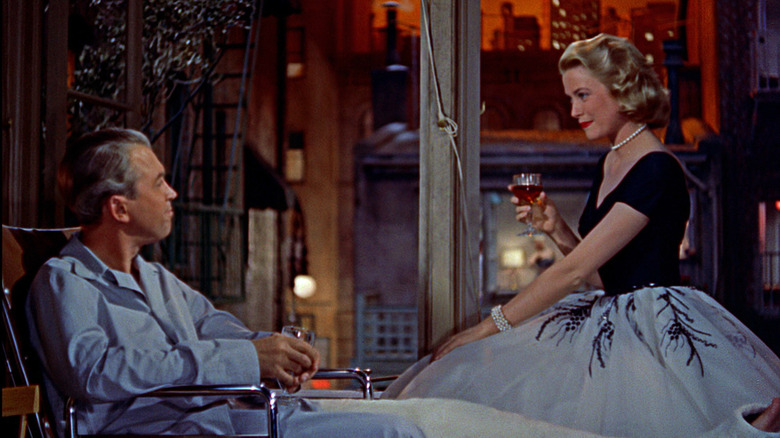
Watching "Last Night in Soho," one easily gets the impression that Alfred Hitchcock was a primary influence on Edgar Wright. The film is dripping in thematic similarities to Hitchcock's work and "Rear Window" is no exception. Another Jimmy Stewart vehicle, "Rear Window" follows him as L.B. Jeffries, a photographer with a broken leg. He sees things in his convalescence that make him believe one of his neighbors has murdered his wife and disposed of the body. Obsessed with discovering the truth, he employs his would-be girlfriend, Lisa (Grace Kelly), to help get to the truth.
Things don't turn out well for them and both of their lives become endangered as the killer discovers that there is a witness to his crime. The entire time, Jeffries is forced to agonize over whether or not a crime was actually even committed.
More than anything, "Rear Window" explored the nature of voyeurism and jumping to conclusions. Eloise's entire story in "Last Night in Soho" is plagued by this, as her voyeuristic nature takes over, plunging her into a dream world that becomes a nightmare.
What Lies Beneath (2000)
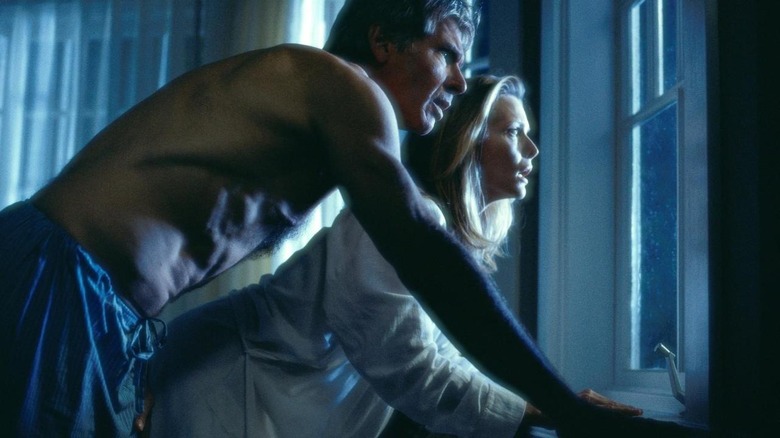
In 2000, superstar director Robert Zemeckis tackled the idea of a Hitchcockian thriller that includes the supernatural. In Hitchcock films, the villain is always grounded right here on Earth. For Hitchcock, it seems like that was the most frightening thing he could think of -- that there were monsters living beside us. Zemeckis explored a version of Hitchcock that accepts that the supernatural is not only possible, but frightening.
The assembly of "What Lies Beneath," the turns it takes and its raw construction, are so masterful and tied to Hitchcock that it might be easy to dismiss as a clone. But Zemeckis adds something more to it and we're all better for it. Through the character of Claire (Michelle Pfeiffer), it hits many of the same notes of descending into madness that "Last Night in Soho" does, making it a must watch if you loved Edgar Wright's film.
I wrote about "What Lies Beneath" for /Film in 2018, and you should revisit both that piece and the film.
Rope (1948)
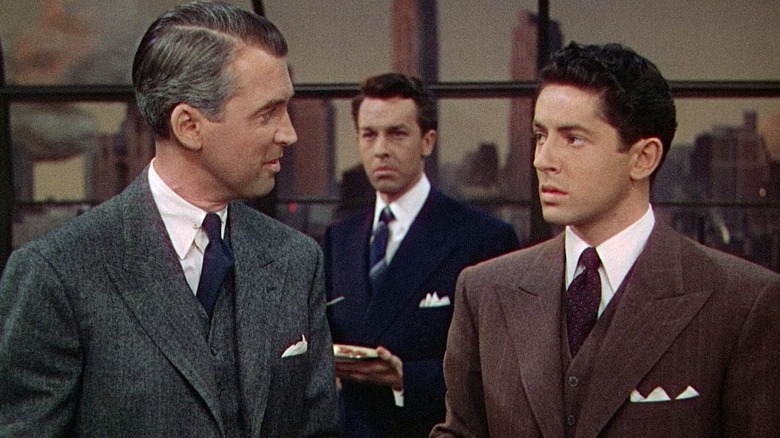
"Rope" is Alfred Hitchcock's first color film, and he uses light and color in ways that felt like a revelation in the 1940s. Through the course of the film, the sun descends and night overtakes day. Outside the window, a flashing neon light intrudes on the inside of the scene and every time Eloise is in her apartment in "Last Night in Soho," this callback to Hitchcock was all I could think of. Wright takes that one step further, timing the music and editing in time with the flashing lights in order to match the mood of the scene. It's masterful to watch him take things one step further than Hitchcock.
The other thing that makes "Rope" remarkable is how it oozes a fear of discovery. Jimmy Stewart (again) plays a college professor whose students took his ideas a step too far and murdered one of their classmates. Stewart is the only one who suspects what they could have done and engages them in a game of cat and mouse to discover the truth. The end of the film is punctuated by a monologue that might be one of Stewart's finest. Building the context of fear is something Hitchcock made his name with, Wright takes it a full step further in "Last Night in Soho."
"Rope" is often dismissed as lesser Hitchcock and a failed experiment, as the film was designed to appear to be one seamless shot. But don't let anyone fool you into thinking it isn't worth your time. It's terrific, and watching it side-by-side with "Last Night in Soho" will only aid in your enjoyment.
Dead Again (1991)
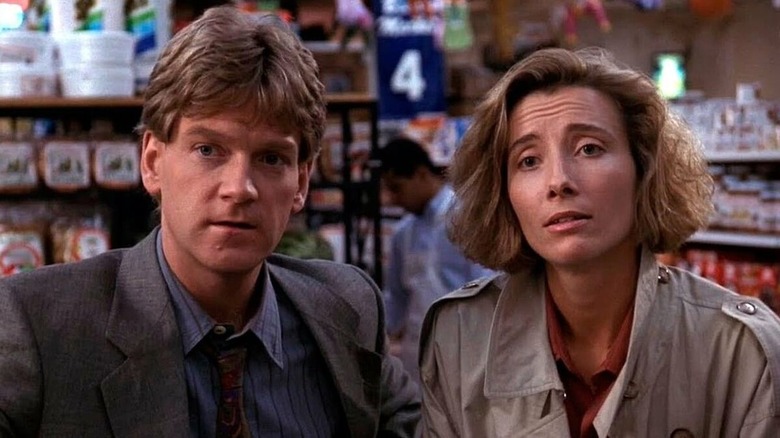
Kenneth Branagh is an incredible director in his own right and, in 1991, crafted his own version of a Hitchcockian thriller, this one leaning on the trope of reincarnation to frame the story. "Dead Again" tells the tale of a private detective (Branagh) who comes across a woman with amnesia (Emma Thompson.)
The two realize they might be the reincarnated versions of a pair of star-crossed lovers that suffered a terrible fate decades prior. Margaret Strauss (Thompson) was murdered and her husband, Roman (Branagh), was accused of the murder and sentenced to death. The movie engages in the same sort of twists and turns that Wright engages with characters in "Last Night in Soho." The use of actors like Diana Rigg and Terence Stamp really help sell the inevitability of the direction and misdirection in this regard.
"Dead Again" is a wonderful film, a blend of Hitchcock if he took on topics like reincarnation, and it heavily borrows imagery from his repertoire like "Spellbound" (1945). Those recurring visual motifs across time are something Wright plays with like an expert.
It also has one of the great Robin Williams bit parts, making it doubly worth your time.
Psycho (1960)
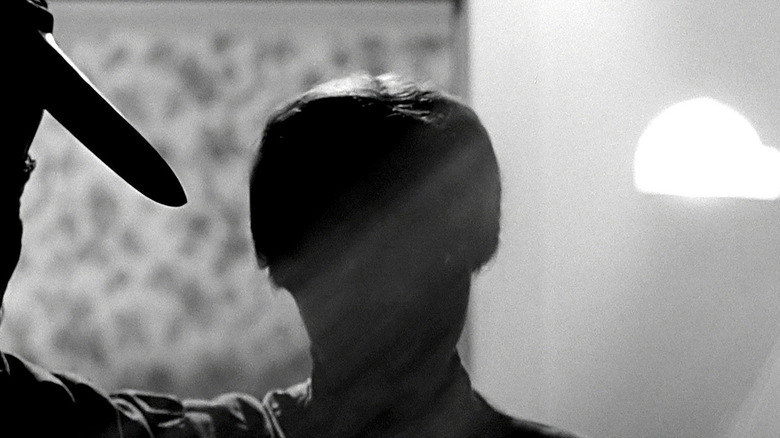
No one could photograph sleight of hand with a knife and a murder like Alfred Hitchcock, but Edgar Wright really gives him a run for his money. The iconic shower scene where Norman Bates (Anthony Perkins), dressed as Mother, murders Marion Crane (Janet Leigh) is one of the most legendary murders committed to film. It's built with such a frenzied tension but there's something about the craftsmanship of each shot, all showing you something you maybe only thought you saw.
As "Last Night in Soho" plays out, knife-play becomes integral to the plot and Wright is able to play sleight-of-hand tricks of his own.
Both films also feature a killer you sympathize with to a degree, making them perfect companions.
Read this next: Alfred Hitchcock's 15 Best Films Ranked
The post 7 Movies to Watch If You Loved Last Night in Soho appeared first on /Film.
0 Comments